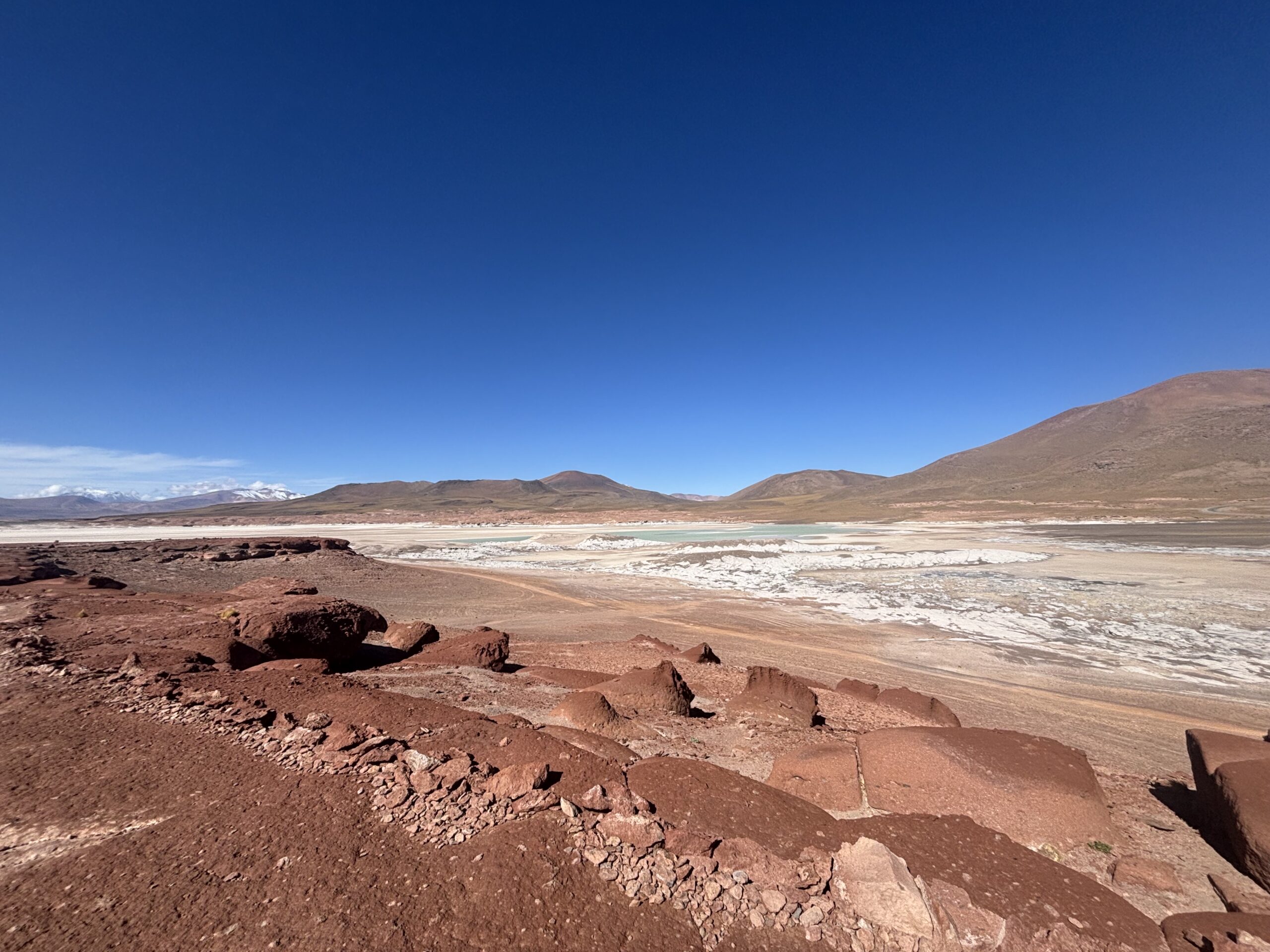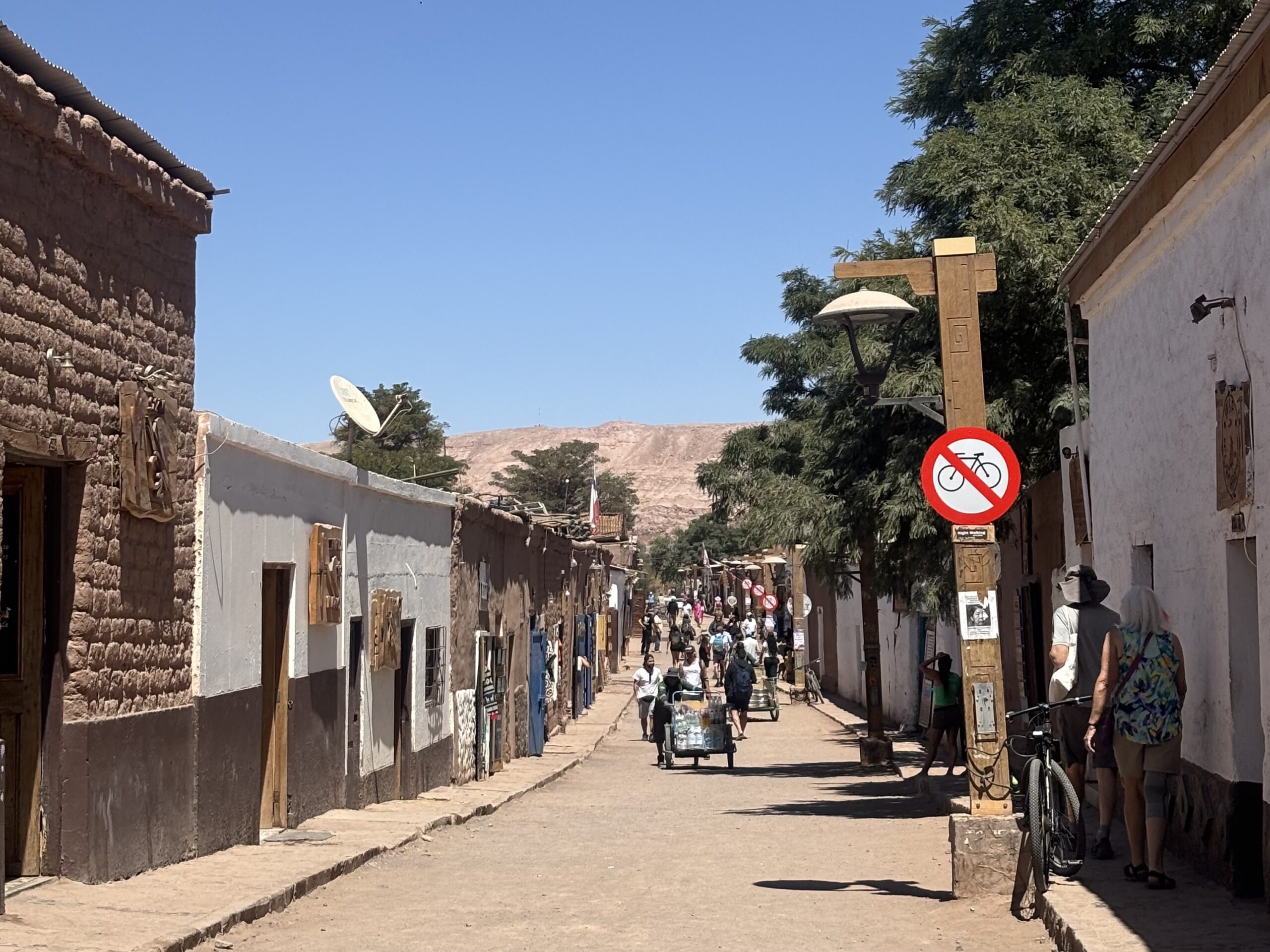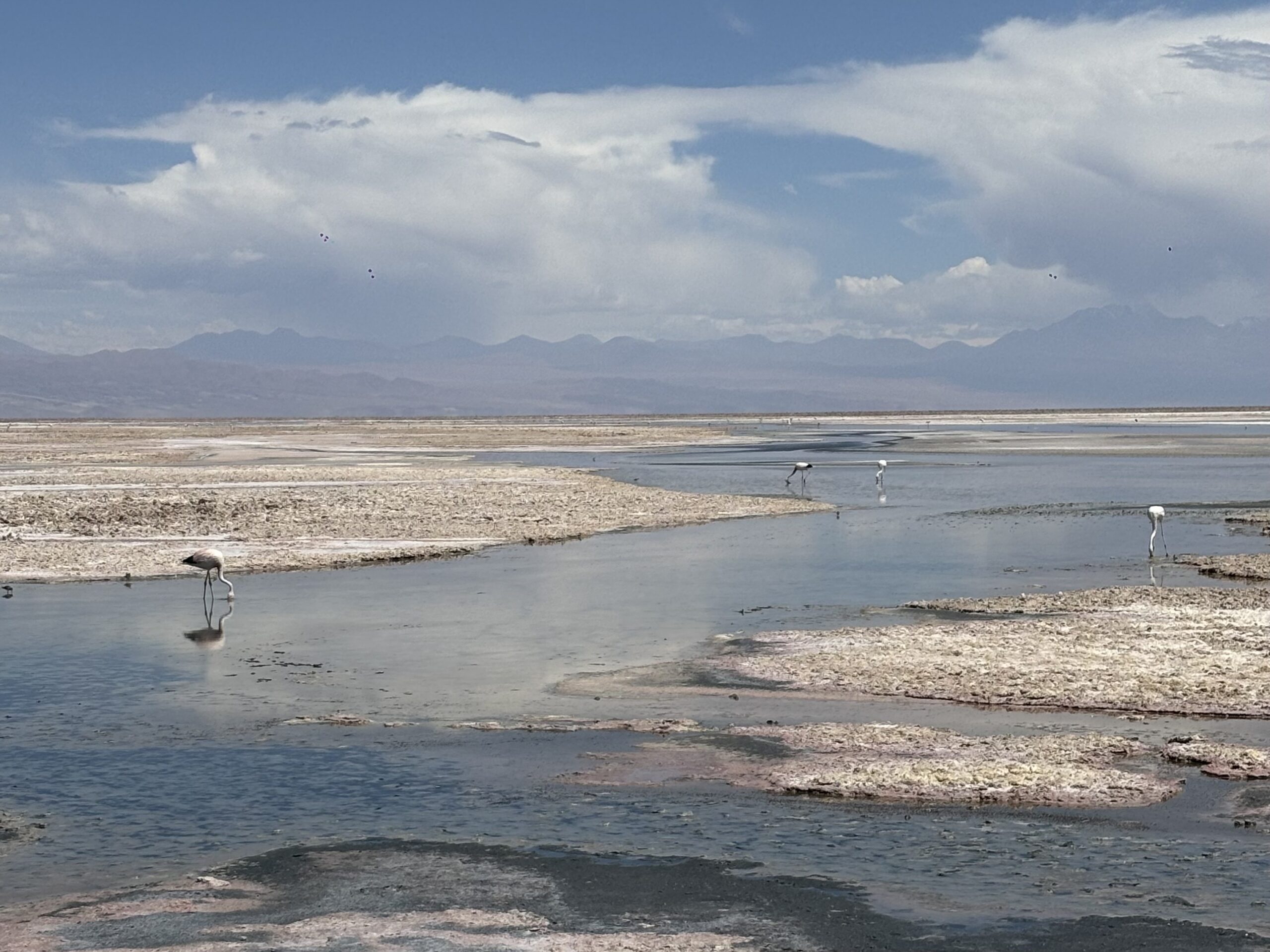
Salar de Aguas Calientes., the famous red rocks and salt flats area of the San Pedro de Atacama at 4,200 metres.
When the idea of solo traveling first came to my head, I wondered a few things. Would I actually like it? Do solo travelers talk to themselves a lot when they go for a hike? What happens if I run into a group of French people without a running mate to help with the awkward silence?
Okay, maybe those weren’texactly the questions I had, but oddities like that definitely pop up more often when it’s just you. Sure, you meet new people—new mates, I’ll call them. (For the sake of this story, shout out to you Johnny!) But even with the laughs and hostel wine nights, the solo-ness lingers. And I only did nine days—compared to others I met who were a year deep in the nomad life.
Anyway, enough rambling. Let’s get to the grunt work of this story:My week alone in the San Pedro de Atacama.
What is the Atacama?
To quickly paint the picture—this place was such a must-see that it pushed me to take the leap into solo travel. San Pedro de Atacama is the driest desert in the world, or at least the driestnon-Arctic one. Even though I somehow saw a rainbow while I was there (go figure), this place is the very definition of dry. I mean,holy hell, the phrase “Sun please, piss off” has never popped into my head so much—and I’ve lived in Australia for five years.
This little rustic town, smack in the middle of all that dryness, absolutely fits the bill. Dust clouds the streets, everyone’s got a bandana over their face like it’s the Old West, and every building is that sunbaked adobe stone that looks like it hasn’t changed in 500 years. I don’t think I saw another town on my travels where the vibe matched the surroundings so perfectly.


Laguna Chaxa.
Despite the absolute lack of moisture,life clings on in strange and impressive ways. Wild vicuñas—like if a deer and a cloud had a baby—graze the high-altitude plains, while foxes, Viscacha (desert rabbits) and flamingos pop up in places so dry they look uninhabitable. You’ll be driving through this cracked, rust-colored or salt filled nothingness and then suddenly—bam—there’s a lagoon with pink birds just chillin like it’s totally normal. Nature here doesn’t just adapt; it thrives in defiance.
And then there’s thefeel of the place. This dusty, sun-charred town somehow pulses with culture. Indigenous Atacameño roots run deep, quietly stitched into daily life. You see it in the handwoven textiles at the markets, in the way quinoa is treated like it’s pure gold, and in the Andean music drifting from hidden courtyards. Even the stars above feel like part of the culture—locals speak about them like old friends. It’s got that rare kind of energy that feels both otherworldly and deeply human.
What did I do there?
The town itself is cool, but the real “get-off-your-ass” stuff is out in the wild. I took a few tours—which were great, don’t get me wrong. The Atacama region spans around105,000 square kilometers—absolutely massive—so having someone take you to those surreal lagoons is helpful.
But the real fun? Renting a bike. It’s a thing here. About 5 to 10 USD and you’re off. There’s something beautifully nostalgic about riding a pushbike again—then you remember you’re inNorthern Chile, weaving through canyons. Two places I’dhighly recommend (assuming you’ve already booked that flight):Garganta del Diablo (The Devil’s Throat) andValle de la Muerte (Death Valley).
Yes, I know, the names sound dramatic—but both offer an unbelievable desert experience.
The Devil’s Throat is this winding, snake-like canyon that literally makes you duck under rocks to avoid knocking yourself out. At the end, you get a killer view over the entry canyon, and there’s a short 15-minute scramble up the rocks. Most people stop there—but if you spot the little side alley before the view,go down it. I found a narrow path that was too tight to bike through, so I ended up climbing a bit. Felt like I was in a wildlife doco, crawling through a maze that could eat you up if you forgot your way (don’t worry, it’s totally safe and so worth it).
Death Valley is similar, but it somehow feels even more baked. The canyon’s tighter, the walls feel like they’venever known shade, and then out of nowhere—bam—massive sand dunes. Of course, they’ve got sandboarding tours here (because of course they do), but there’s also the cheaper, more chaotic option: rent a board and go rogue. Which is what I did.
Reel from my DuckoffandTravel instagram.
Carrying that board up those dunes is a workout and a half, and I faceplantedat least twice, but it was fun as hell. Just sitting at the top, alone, grinning like an idiot with the most ridiculous view around. The only downside? I absolutelycooked myself. I mean proper, crisped-up sunburn—shoulders on fire, neck sizzling, and zero aloe vera in sight. Chilean desert: 1, Me: 0. Still worth it.
Pros and Cons of Solo Traveling
Solo travel is one of those things that sounds either wildly romantic or absolutely terrifying, depending on who you ask. And honestly? It’s a bit of both. I’ll use San Pedro de Atacama as my example.�
Let’s start with the cons. When you’re solo, the logistics can be a pain—and expensive. Tours cost more when you’re not splitting with a group, and renting a car—the golden ticket for exploring Atacama properly—is far more doable with a few travel buddies. You’ll reach more places (and way cooler ones), faster. Not to mention you’ll have better odds of finding one of those surreal desert raves, like the infamous “Magic School Bus” parties that pop up in the middle of nowhere. But without a car? Good luck. Public transport doesn’t exactly go where the wild things are.�
And then there’s the social aspect. Group travel often comes with a built-in buffer—someone who’ll break the ice or ask awkward questions. When you’re alone, it’s all on you. No one’s introducing you to new people or dragging you into random conversations. You’ve gotta want it.
But here’s the pro side: that effort? It makes every connection feel more real. When you’re solo, you’re more present. You notice more. You take things slower. And in places like San Pedro, where the town itself feels like it’s clinging to the edge of the Earth, that quietness somehow matches the moment. You end up meeting fellow wanderers over sunset beers, or bonding over a shared desperation to find Wi-Fi or a carpool to the salt flats. It’s less curated, more human.
Looking back, sure—I could’ve used a few mates to split the costs or share the driving. But something about being alone in a place that feels this remote made the whole thing hit harder. The isolation didn’t feel lonely; it felt fitting.
So if you’re on the fence about solo travel, take my experience as a bit of inspiration. It won’t always be easy, and it definitely won’t always be cheap. But itwill be yours—and that makes it worth it.